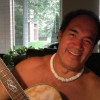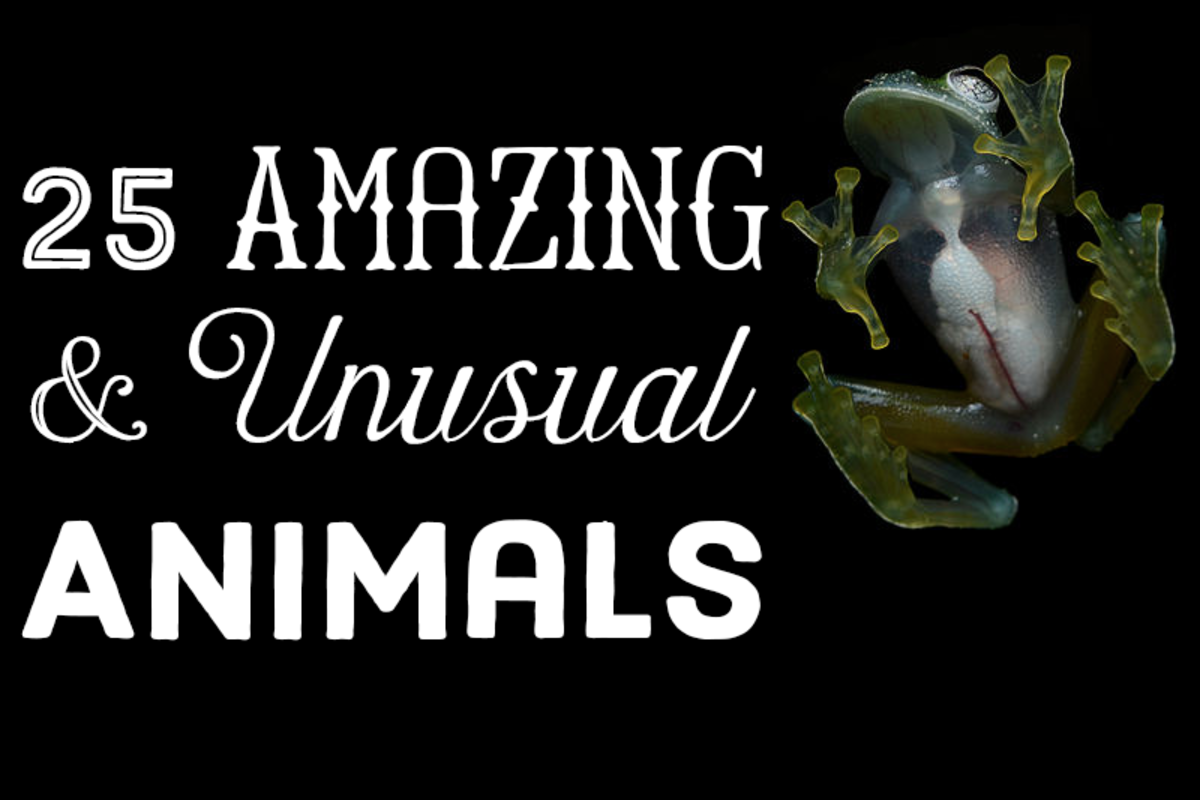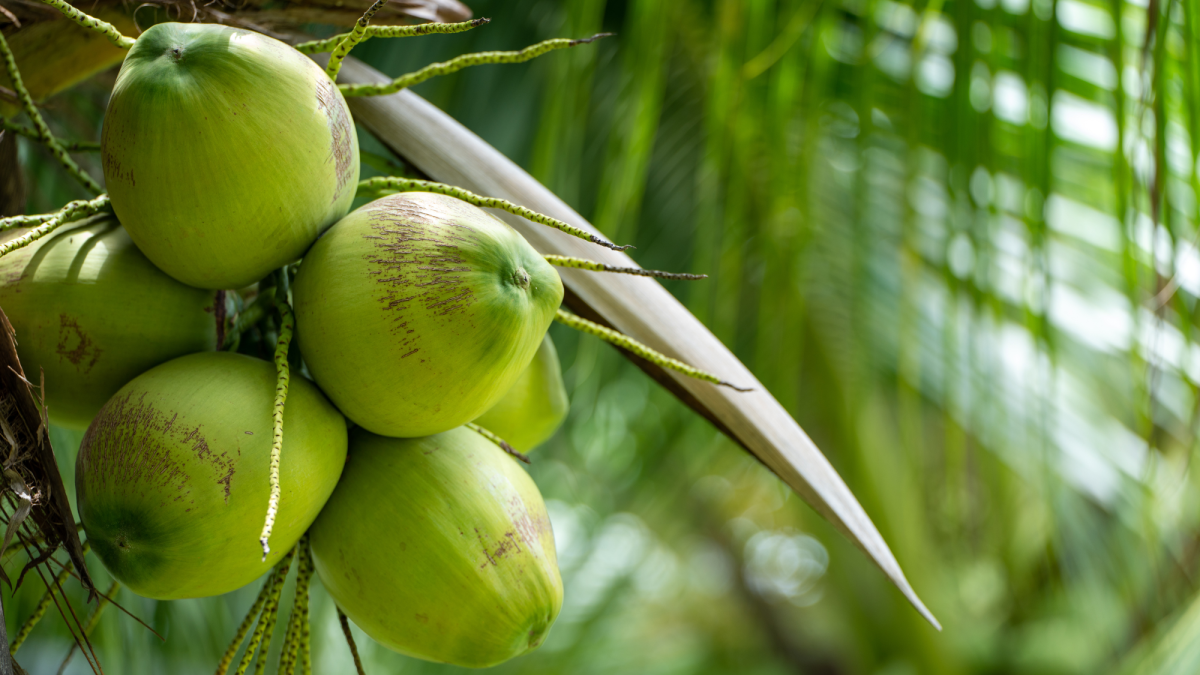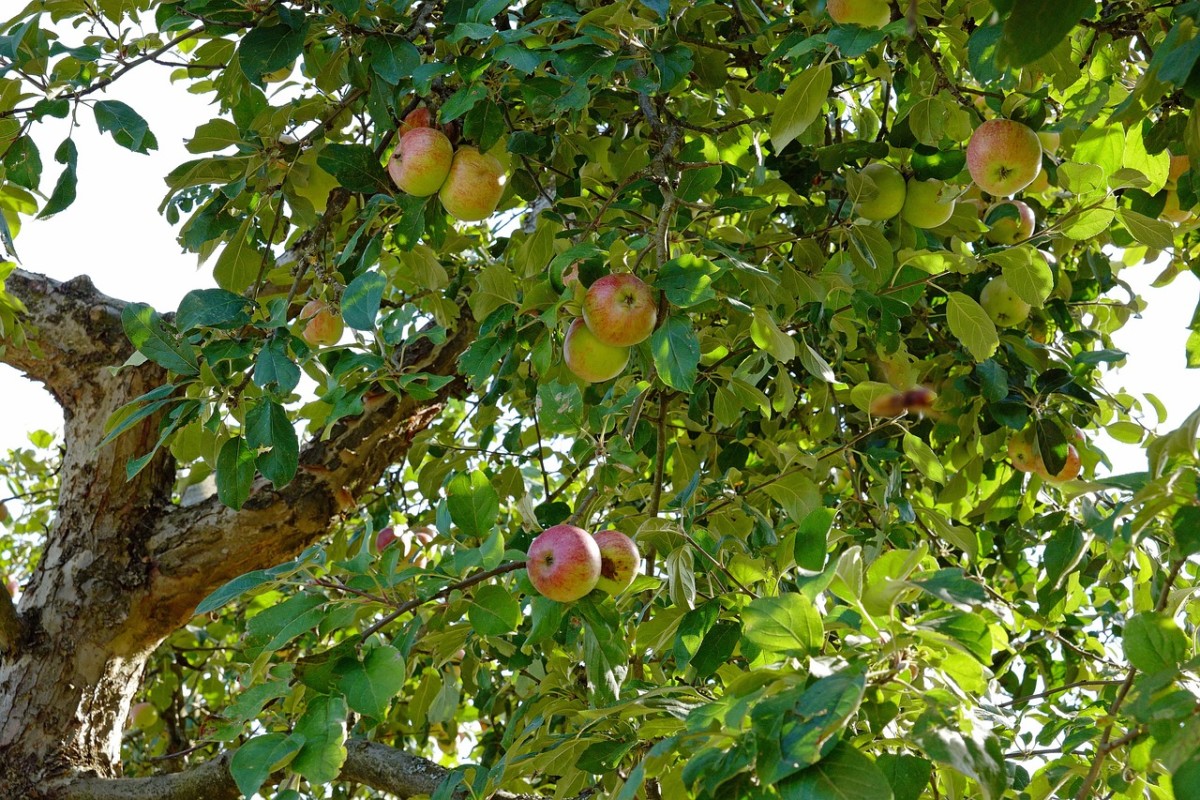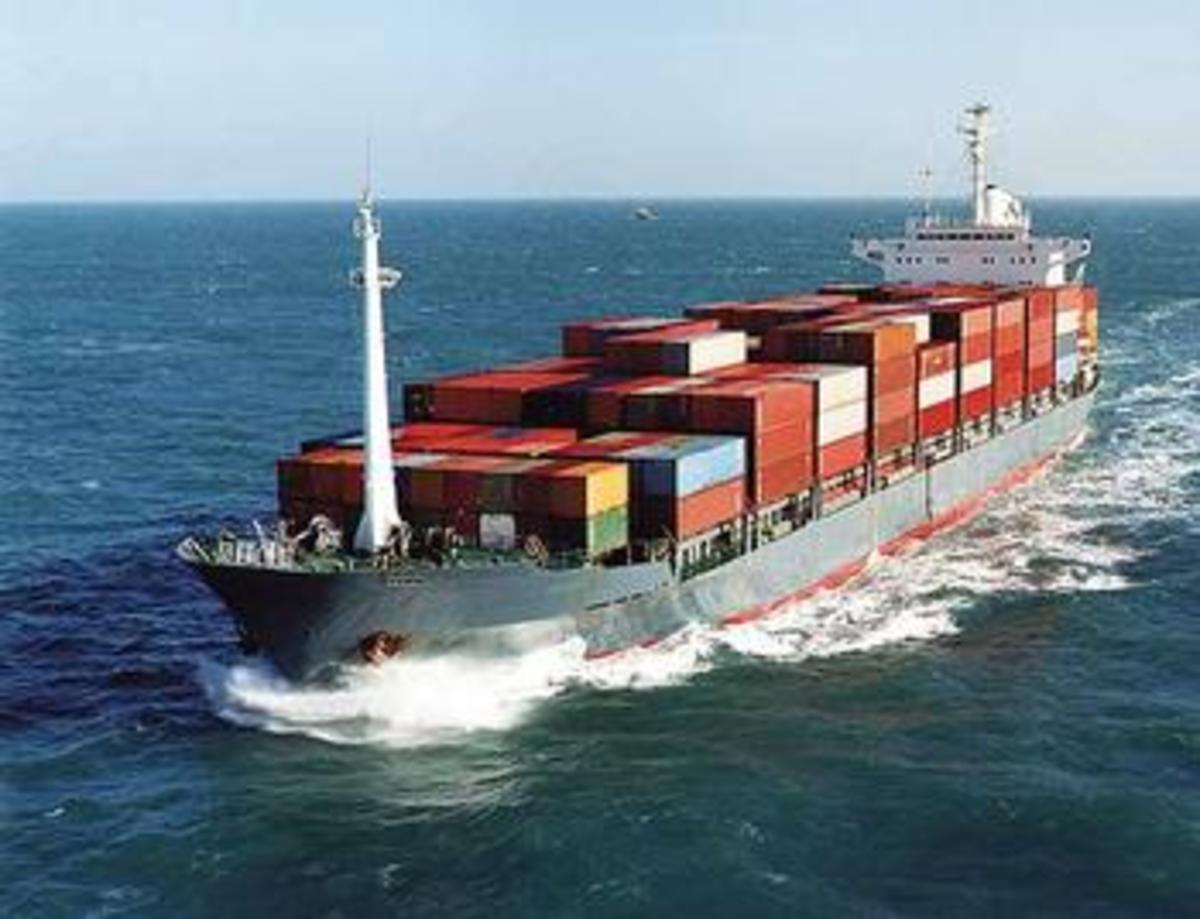The Coconut Crab - King of the Copra
The Vegetarian Coconut Crab
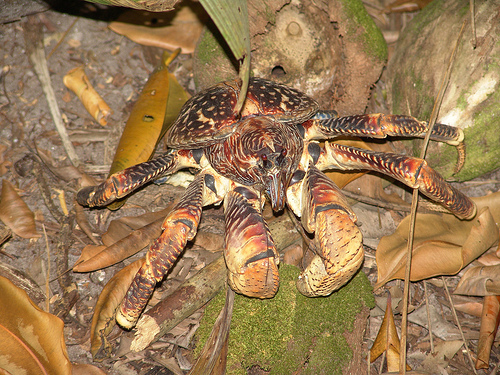
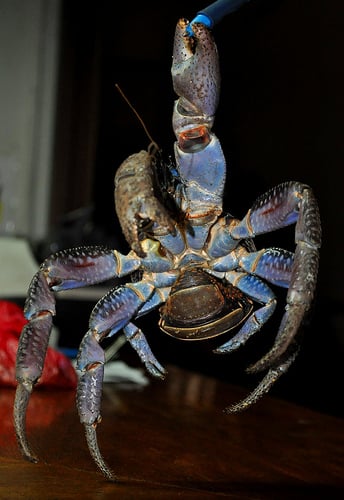
Coconut tree climbing
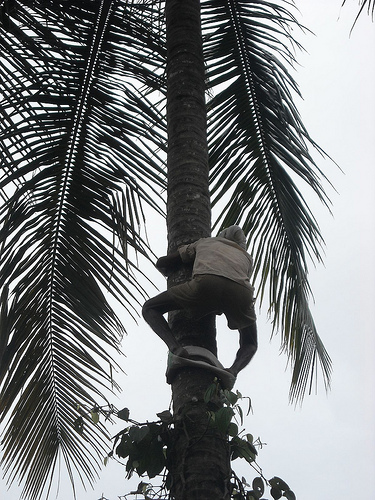
Coconuts crabs can climb trees
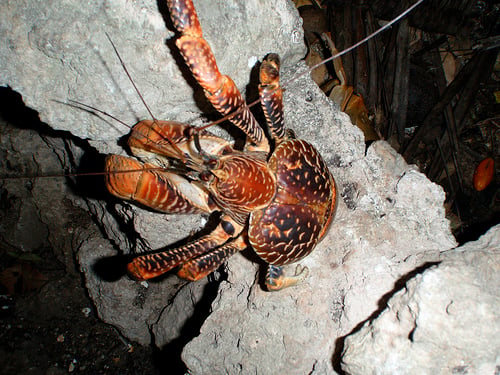
Coconut Crab Soup
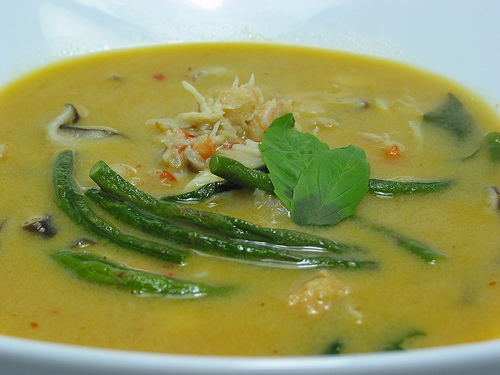
Young hermit-like coconut crab
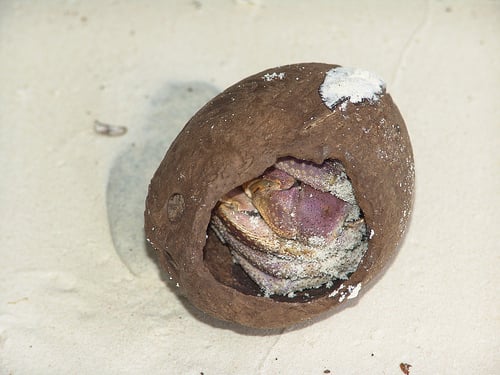
Two care-free kids climbing coconut trees
When I was much younger, my family took a vacation to the island of Samoa. It was summer, and the heat was unyielding. I recall every time that I came in from playing outside, my shirt was always wet - either from the ocean water, or from just plain kid sweat.
I became fast friends with my cousin Maota (Mow-tah) we started hanging out together from the start. We quickly compared our lives as it was on separate islands - my island being Hawaii. Current songs on the radio that I liked never made it to Samoa - the songs that they listened to on the radio was about a year or so behind.
One of the joys we shared was climbing trees - coconut trees in particular. For Maota, it was a way of life. Back then, they cooked most of the meals outside by fire in an area loosely called "umu" (oomoo). The coconut was used for oils, as well as for meals, and the leaves were used for weaving baskets and cooking. In Hawaii, we were farther ahead in technology, and unlike our Polynesian counterparts in Samoa, making an umu became a big event, for very special occasions. In Samoa, it was an everyday event, and a task left up to the boys of the family.
One especially hot July day, we went by the Oceanside where very tall coconut trees grew. They swayed like hula dancers in the lightly blowing trade wind. It must have been 30 feet tall in my boyhood's eyes, but realistically, was probably only 10. I stripped my t-shirt off and used it to tie my ankles together. When you climbed a coconut tree, you grabbed the trunk with both hands, and hopped both feet up the tree, keeping them together. If you needed to rest during the climb, you simply sat back on your feet. The tied ankles would support your weight as you sat.
I quickly scaled the tree and thought highly of my skill, when I was about three feet from the coconut bunch I noticed big crab-like legs wrapped around the tree. I thought it was part of the tree's natural brown mesh that was just shaped like crab legs. I looked at it more closely and it turned to look at me - it's red beady eyes and over sized claws warned me of what was to come. It screamed at me - no, that was me.
I screamed like a girl, loosed my hold on the tree, and free-fell halfway down with only my feet in contact with the tree. When I realized that I was falling, I desperately grabbed at the tree hugging it to me which resulted in scrapes on my chest and chin. I mindlessly jumped the rest of the way down, missing the small rock pile just a few feet away. Maota was laughing and was still on the ground as I recovered. Apparently, he saw the crab on the tree earlier and was just waiting to see how I would react.
When he was empty of all his laughing, and scream-mimicking, and 'I'm telling your dad you swore!', and laughed some more, he finally stood up and pulled me up. He then grabbed a rock from the ground and flung it up into the tree with expert marksmanship, and down came this alarmingly large clawed crab. It was even more hideous the more I looked at it... so we ate it. By the way, Samoans are rock throwing experts!
Coconut party
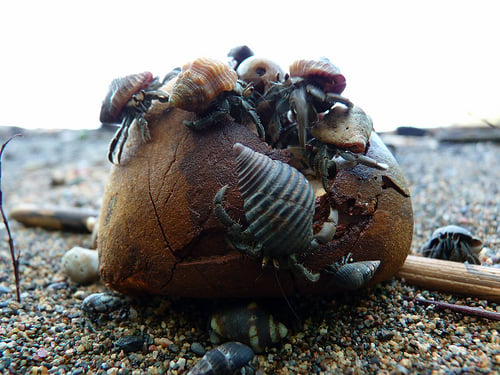
Coconut Crabs Thrive Where Humans Are Not
The Low Down on Coconut Crabs
Coconut crabs are a relative of the hermit crab, and like the hermit crab they have a soft shell that has to be protected. At 5 years, reproductive maturity is reached. On dry land, the male fertilizes the females eggs, and the female will release the eggs in the ocean. The eggs are plank-tonic and finally settle to the ocean floor after 3 - 5 weeks. Soon there after, the little crabs will find shells, and exit the ocean. The crab will shed it's shell when its own exo-skeletal shell hardens.
The coconut crab can weight up to 9 pounds, and grow to a ripe age of 60 years. Although it is called the coconut crab, it rarely eats just coconuts. The crab will eat fruits, nuts, and other seeds as opportunity presents. The coconut crab appears everywhere in the Pacific and Indian oceans where there are coconut trees, but are widely hunted where ever there are people. The International Union for Conservation of Nature (IUCN) has listed the coconut crab specie as Data Deficient - it means that there is not enough data on the count and distribution of the specie.
